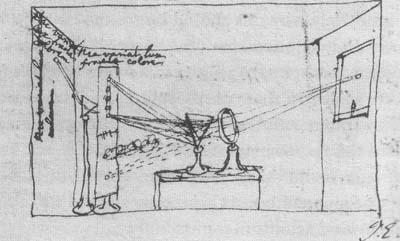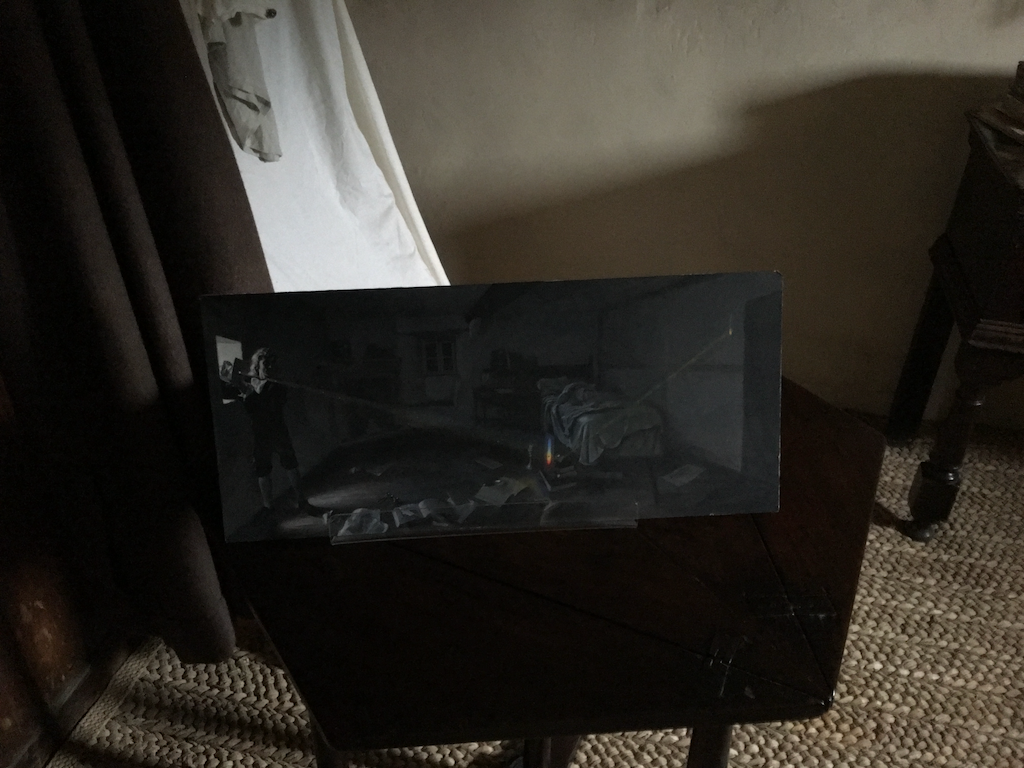Fun Science / Newton
This page is dedicated to one of the greatest minds of all times, Isaac Newton (born 1643). Newton was the first true scientist: he set the way of thinking for the next generations. Even now that his theory is obsolete, his approach remains dominant throughout science, and it will probably not change in the next couple of centuries.
It is now established that this force is gravity, and therefore we shall call it gravity from now on.
Calculus
You probably know that Newton was the person who actually invented differentiation and integration, two of the most important aspects of mathematics. He was the first man ever to distinguish between zero and infinitesimal. He used a special symbol , like a small ‘o’ to distinguish the infinitesimals from 0. And it was exactly this minor(?) detail that enabled him to discover the derivatives and the integrals. In his own words:
That it may be knowne how motion is swifter or slower consider: that there is a least distance, a least progression in motion & a least degree of time… In each degree of time wherein a thing moves there will be motion or else in all those degrees put together there will be none:… no motion is done in an instant or intervall of time.
You have the very first notion of dx and dt before your eyes…
Gravity
Newton told at least 4 people that he was inspired by an apple tree for his theory, although this did not happen instantly and probably not by an apple falling on his head. He was always thinking on how the bodies move (“gravity” didn’t exist as a word then). He had a great rival, Robert Hooke, with whom they disagreed very often, and a great friend, Edmond Halley (the first one to observe in detail the comet which was later named after him).
When Newton was 36, they had a great debate regarding the movement of a body heading towards the center of the earth. Hooke’s persistence drove Newton at a rage. They both accepted that there was a force that was pulling heavy objects towards the center of the earth. Hooke suggested a force that depended on the distance from the center. (Halley had actually carried a pendulum to a 2,500 feet hill and judged that it swung more slowly there, supporting this claim). They just didn’t know what the power of this force was. They both knew at the time (from Kepler) how planets were moving, and that an inverse square law might cause a body to move on an ellipse.
Hooke couldn’t work the mathematics and put this to Newton straightforward: “My supposition is that Attraction always is in duplicate proportion to the distance from the Center Reciprocal”. Hooke actually managed to formulate the problem exactly: he asked Newton to find the mathematical curve and suggest a physical reason. He asked him because he knew he could work it out. He wrote to Newton about this 2 times, but he never got an answer.
In August 1684, when Newton was 41, Halley put again a question to Newton: supposing an inverse square law of attraction toward the sun, what curve would a planet make? Newton then said an ellipse: he had calculated this a long time ago (when he was 23). He started working again on it and several months passed before providing Halley with a proof. He had great difficulties because there was no vocabulary associated with this work.
So, he invented it: he defined Quantity of matter as mass, and Quantity of motion as the product of velocity and mass. He then send Halley a 9-page treatise “On the motion of bodies in orbit”. Halley was excited and asked Newton for more pages, but Newton was not finished.
Here is how Gleick describes Newton’s finest work:
As he wrote, computed, and wrote more, he saw the pins of a cosmic lock tumbling into place, one by one. The alchemical furnaces went cold; the theological manuscripts were shelved. A fever possessed him, like none since the plague years. He ate mainly in his room, a few bites standing up. He wrote standing at his desk. When he did venture outside, he would seem lost, walk erratically, turn and stop for no apparent reason, and disappear inside once again. Thousands of sheets of manuscripts lay all around, ink fading on parchment, the jots and scribbles of four decades, undated and disorganized. he had never written like this: with a great purpose, and meaning his words to be read.
On 1686, at the age of 44, Isaac Newton gave Halley Book I of Philosophie Naturalis Principia Mathematica.
Rainbows
Newton was the first man ever to understand the mystery of rainbows. Until his time, people were aware of the fact that when light enters a prism, then you can see all the different colors exiting it. However, it was believed that the prism somehow colors the white light.
 Newton’s drawing of the prism experiment
Newton’s drawing of the prism experiment
Newton’s idea is drawn by himself in this picture. He put a second prism after the first one, and let only one color pass through it. Then, the color remained unaltered, disproving the common belief. He then suggested that the prism just divides the light and does not color it; that “light consists of rays differently refrangible”.
 A recreation of how the experiment would have looked like
A recreation of how the experiment would have looked like
Newton was a very esoteric man; this was the first discovery that he made known to the public, at the age of 29 (even though he did the experiment 6 years earlier). Yet many scientists disputed him, scientists like Christian Huygens and (his great rival) Robert Hooke.
